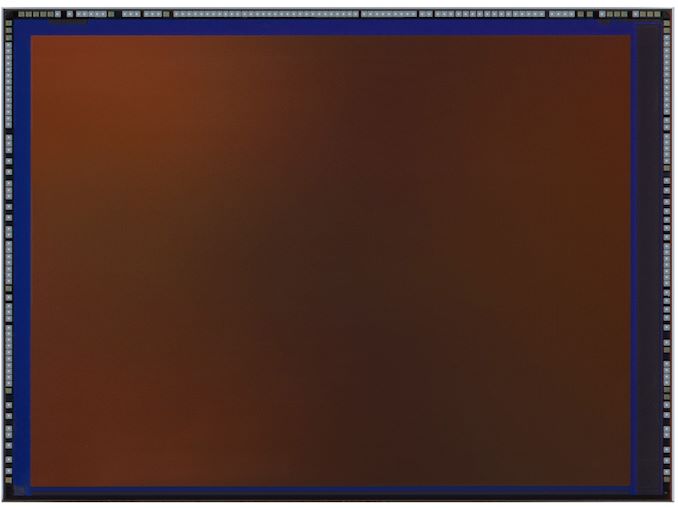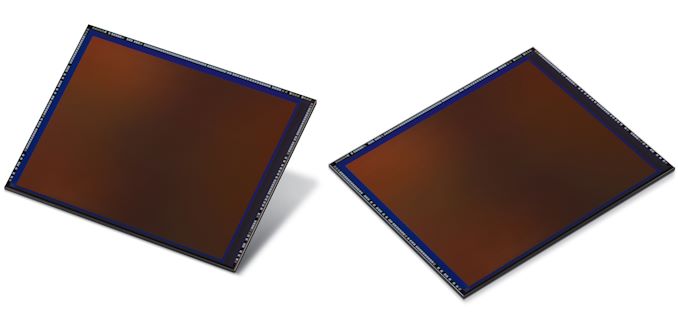Samsung Unveils ISOCELL Bright HMX 108 MP Sensor for Smartphones
by Anton Shilov on August 13, 2019 3:00 PM EST- Posted in
- Smartphones
- Samsung
- Xiaomi
- Sensor
- HMX

Samsung this week has introduced the industry’s first 108 megapixel image sensor for smartphones. The Samsung ISOCELL Bright HMX promises to allow smartphones to take photos comparable to those from DSLR cameras. One of the first handsets to use the new sensor will be a phone from Xiaomi.
Samsung’s flagship 108 MP ISOCELL Bright HMX is a fairly large 1/1.33-inch image sensor for smartphones. Thanks to the combination of its sheer size and the underlying sensor technology, the Bright HMX is designed to absorb more light than existing image sensors, allowing it to offer better photos even in low-lit conditions. The sensor also supports the company’s 2x2 pixel-binning Tetracell technology, which merges four pixels into one to produce brighter 27 MP photos. In addition, the ISOCELL Bright HMX features Samsung's Smart-ISO capability, which uses high ISOs in darker settings to reduce noise and low ISOs in brighter settings to improve pixel saturation.
When it comes to video, the HMX supports recording at up to 6K (6016 x 3384) resolutions at 30 frames per second, with the same field-of-view as photo mode.
One thing to note is that while the 108 MP ISOCELL Bright HMX sensor can offer a rather high image resolution, it's not a complete system in and of itself. Smartphone manufacturers will need to use SoCs that can handle such a large sensor, both in terms of consuming the sensor's 108 MP output, as well as offering the processing power (ISP and otherwise) to handle all the post-processing expected for a modern smartphone camera.
Samsung plans to begin mass production of the 108 MP ISOCELL Bright HMX image sensor later this month. Meanwhile, Samsung has confirmed that partner Xiaomi will be the first to use the sensor, though the companies are not saying what that first device will be.
Related Reading:
- Samsung Announces Galaxy Note10 & Note10+: A Redesign With Feature Disparity
- Samsung Unveils 64 MP & 48 MP ISOCELL Bright Image Sensors for Smartphones
Source: Samsung











39 Comments
View All Comments
s.yu - Wednesday, August 14, 2019 - link
I don't know what they're calling binning but Samsung's 48MP GM1 does not allow the ISP to access more than 12MP of data (smartphones that allow 48MP output with that sensor rely entirely on interpolation), it may not be binned at the photosite level but the signal's still combined using a pretty primitive algorithm at a low level.As for gain, not that many sensors are dual gain (or tri gain), and those with duo/tri gain get almost a stop of DR extra at certain sensitivities (usually in the ISO400-800, and ~12800 range respectively), many sensors on Sony's mirrorless have been tested for this.
Samus - Wednesday, August 14, 2019 - link
I wonder what their yields are. I mean 1 dead pixel and the thing is basically useless for a professional. Is there some sort of binning or error diffusion to isolate a bad pixel?FunBunny2 - Wednesday, August 14, 2019 - link
"the thing is basically useless for a professional"pro photogs used a smartphone? I mean, other than in adverts for smartphones?
Samus - Thursday, August 15, 2019 - link
I know a lot of pro photographers that use a smartphone as their backup camera now.They're 'that' good.
edzieba - Wednesday, August 14, 2019 - link
Up until a year or two ago I would have been into the "Give me fewer larger pixels and a bigger sensor!" camp. However, seeing the results computational photography is now able to achieve (think Pixel 2 onwards, and some of Huawei's phones) I can see the benefits that very high pixel counts can achieve with proper image synthesis, especially combined with non-full-frame pixel readout (e.g. staggered binning) and multi-frame capture.AdditionalPylons - Wednesday, August 14, 2019 - link
+1s.yu - Wednesday, August 14, 2019 - link
Multiframe‘s really come to yield quality output, however nothing good's come out of quad bayer. Just compare the texture from Gcam and Nokia 9 (multiple identical modules~multiframe) RAW with light edits to any output, RAW or JPG, with any setting, from the recent Huawei flagships, the former is realistic enough to rival MFT while the latter is still clearly in smartphone territory (waxy, flat, fake sharpening) no matter how you fiddle with it.thelongdivider - Wednesday, August 14, 2019 - link
Samsung should produce a 108MP camera, like an NX2 or something similar. 108MP doesn't make sense for smartphones and will always simply be binned. At APS-C, it could actually be used!Majs Korv - Sunday, August 18, 2019 - link
Even better dick picks! Bring it!